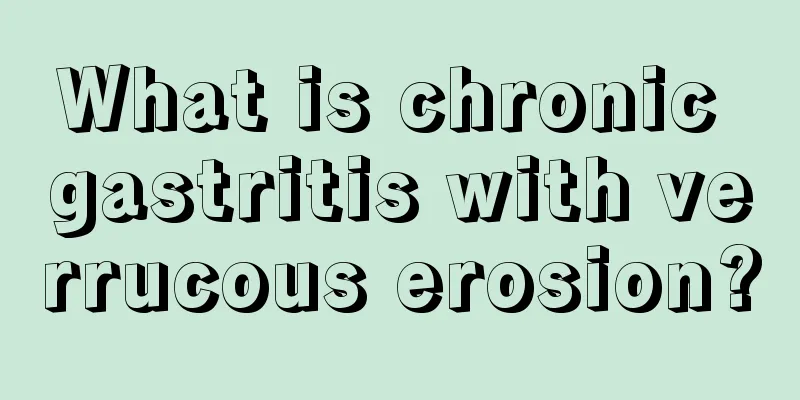What is chronic gastritis with verrucous erosion?

|
Chronic gastritis with verrucous erosion is actually a special type of chronic gastritis. Its clinical manifestations are upper abdominal pain, dull pain, or vomiting blood, black stools and other symptoms. The impact is relatively serious, so scientific treatment is required to improve it. 1. Verrucous gastritis, also known as acne-like gastritis or chronic erosive gastritis, is a special type of chronic gastritis. It is characterized by recurrent or persistent multiple gastric erosions of unknown cause. The erosions are characteristically warty, most of which are distributed in the pyloric gland area and transitional zone, and a few can be seen throughout the stomach. 2. The clinical manifestations are non-specific. There is upper abdominal pain, which is dull and bloating and often irregular. This is followed by upper abdominal distension, heat, and heartburn. One-third of cases have upper gastrointestinal bleeding (manifested by vomiting blood and black stools). A few cases may be asymptomatic. Although there are unique morphological and histological changes, the clinical manifestations are no different from those of common chronic gastritis. The lesions may regress after treatment or elimination of the cause. In a few cases where the lesions develop to the intestinal metaplasia stage, the hillocks are not easy to disappear, but the prognosis is still good. 3. It is characterized by recurrent or persistent multiple warty raised lesions in the gastric mucosa, which are round or irregular in shape. Most of them are scattered in the gastric antrum and can also be seen in the gastric body. Sometimes they are connected along the folds like beads. They can also be isolated single bulges or a few lesions in the gastric antrum, with a diameter of about 5 to 10 mm and a height of about 2 to 3 mm. In the active stage, it is common to see erosion and depression in the center of the bulge, and the surface may be covered with blood scabs and dirty moss. 4. Domestic literature generally refers to it as verrucous gastritis. Its etiology and pathogenesis have not yet been fully elucidated, and there is no unified treatment plan. In recent years, studies have reported that it has a tendency to become cancerous. |
<<: Epilepsy treatment and dietary considerations
>>: What to do if the cesarean section scar turns red
Recommend
Can thyroid cancer cause neck pain?
Whether thyroid cancer can cause neck pain depend...
Pine parasitic effects and indications
Many people have never heard of pine parasite. It...
What are the consequences of lack of sleep
Sleep is not a trivial matter. If we don’t get en...
What are the clinical manifestations of cervical erosion?
Cervical erosion is a gynecological disease, and ...
What is the white mark on the front of the nail?
Nails are a part of our body, and nails are also ...
What are the methods to remove dark circles?
Many people like to stay up late, and for work re...
What should I do if my teeth have been yellow since childhood
The feeling of showing white teeth when opening y...
Tips on how to open a wine bottle cork
Drinking red wine properly before going to bed ev...
How to make soy milk from dried soybeans?
Whether in the south or the north, people's d...
Specific analysis of the symptoms of brain tumors
The nerve cells and brain cells in the brain are ...
A good tea recipe for dry mouth and less fluid in nasopharyngeal carcinoma patients after radiotherapy
Radiotherapy is the main treatment for nasopharyn...
How to make various cakes in an electric baking pan
The electric baking pan can be said to be a very ...
The causes of cervical cancer that female friends should know
The cervix is a place where tumors are easily f...
Is high blood sugar scary?
High blood sugar is a common condition in our liv...
Effect of diet on pituitary tumors
What is the impact of diet on pituitary tumors? T...









